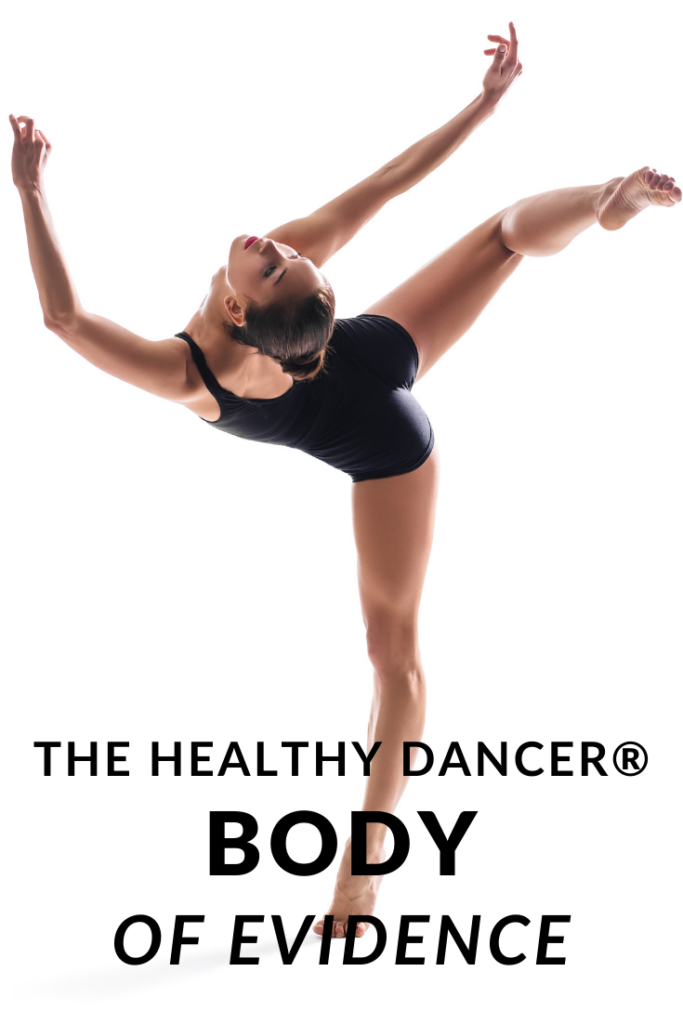For dancers, the mind-body connection plays a pivotal role in developing artistic expression. It’s a connection that involves your ability to move— from a tendu to a Saut de Chat, without the undertone of everyday stressors impeding your ability to fully embrace your dancing. While rigorous training is undeniably essential, the often-overlooked factor that significantly contributes to this connection is one’s relationship to both food and nutrition.
It’s simple: an under-fueled dancer is a stressed dancer. Even when pushing through the most rigorous of variations, your performance will suffer as your body metabolically compensates for the missing calories (usually presenting as a RED-S, a compilation of consequences resulting from nutritional inadequacies).
With this, a dancer’s mind-body connection relies on more than just a balanced plate. In this blog post, we will explore the intricate relationship between food, nutrition, and the mind-body connection for dancers— welcoming The Healthy Dancer® Body of Evidence as a tool to build your mind-body connection.
Understanding the Mind-Body Connection
The mind-body connection is the ability to integrate our thoughts and emotions with our physical movement, seamlessly. Rather than solely focusing on the physicality of dance, we explore the impact of mental health and how, for dancers, this connection enhances performance, emotional expression, and overall well-being.
Is your mind-body connection lost?
While there are a variety of stressors that can drive a dancer’s mind-body connection apart, dieting and restrictive eating is a common start. For many dancers, challenges in body image underscore desires to diet. In addition to this is self-discipline, a common trait for those who pursue the grit needed in dance. However, when used in an attempt to gain some degree of control (over food or body size), this level of discipline can spiral out of control.
A dancer’s risk of struggling with the dieting mentality sets the stage for a strained relationship with food— one filled with unsupportive food thoughts that drive a dancer’s risk of disordered eating and eating disorders. Through these realities comes the disconnect between your mind and body.
The Healthy Dancer® Body of Evidence
Healing your relationship with food, and also, your body, can help you rebuild your mind-body connection. In my work with dancers, we utilize The Healthy Dancer® as a framework for this process— more specifically The Healthy Dancer® Body of Evidence: a tool for guided reflections that bring awareness to your here-and-now.
The Healthy Dancer® Body of Evidence involves a series of prompts that help you scan your internal cues and external surroundings, helping to drive your decisions with more directed intent. The goal is to utilize self-awareness to gain more clarity amid the stress. Some of the most common instances in which we utilize The Healthy Dancer® Body of Evidence include:
- Food choices at meal and snack times
- Understanding hunger cues
- Honoring fullness and satiety cues
- Responding (or not responding) to triggering diet talk.
- Responding (or not responding) to triggering social media posts.
- Understanding the risks of over-training and burnout.
Building Body Trust
We take an internal and external scan. Internally, we begin to identify:
- Where on the hunger/fullness scale you are?
- How are your energy levels both now and in the days prior?
- Whether or not you’re able to focus and concentrate on the tasks at hand.
- Any levels of stress, anxiety, or nerves that might be present.
- How can movement patterns feel less prescriptive and more joyful?
Externally, we begin to notice our environment and the possible triggers for the mental, physical, and emotional sensations experienced above. Ultimately, the goal is to build evidence towards supportive habits. Not feeling regular hunger cues? This could be evidence of an over-booked schedule. Struggling with excessive fatigue? It’s likely time to add more to your meals and snacks. This often means leaning into tools like The Healthy Dancer® Food Flexibility Algorithm and The Healthy Dancer® Functional Fuel.
What’s the benefit of the mind-body connection?
Cultivating a strong mind-body connection allows dancers to support body attunement, enhance proprioception for spatial awareness in the studio, and sharpen self-awareness with food and movement (exercise) decisions. With a stronger mind-body connection comes the ability to prioritize decisions that support long-term performance, some including:
- Adding a variety of foods like fruits, vegetables, and whole grains provides a steady supply of energy and supports cognitive function, aiding in concentration and focus during rehearsals and performances.
- Ensuring an appropriate balance of these macronutrients supports endurance and prevents fatigue, allowing dancers to maintain peak performance levels.
- Prioritize water intake throughout the day, especially during intense training sessions, to prevent dehydration.
- Adopting mindful eating practices.
- Paying attention to hunger and fullness cues, savoring each bite, and avoiding distractions during meals.
- Knowing when it’s time to take time away from the studio.
- Knowing how to navigate stressful conversations.
- The ability to set boundaries from those who spark self-doubt.
Key Takeaways: nutrition and your mind-body connection as a dancer
The role of food and nutrition in fostering a strong mind-body connection cannot be overstated. The Healthy Dancer® Body of Evidence is a helpful tool for dancers to raise self-awareness and build more intent behind their work in the studio, out of the studio, and even at mealtimes. To get started with this work, join the community and embody all it means to become The Healthy Dancer®.




